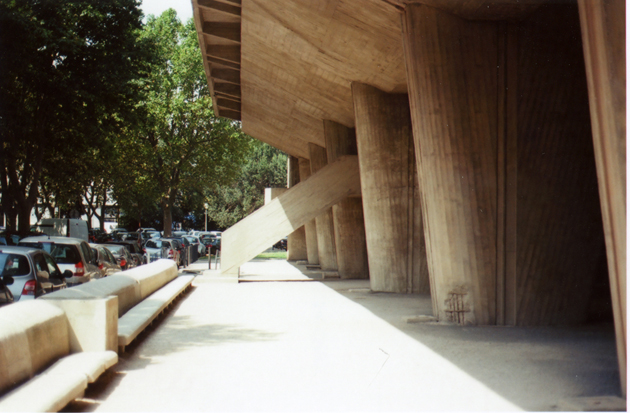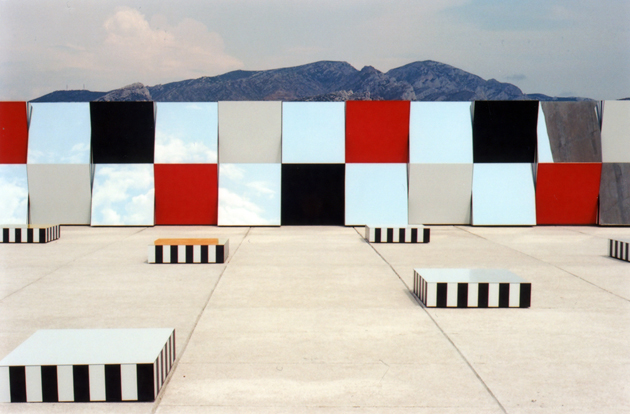
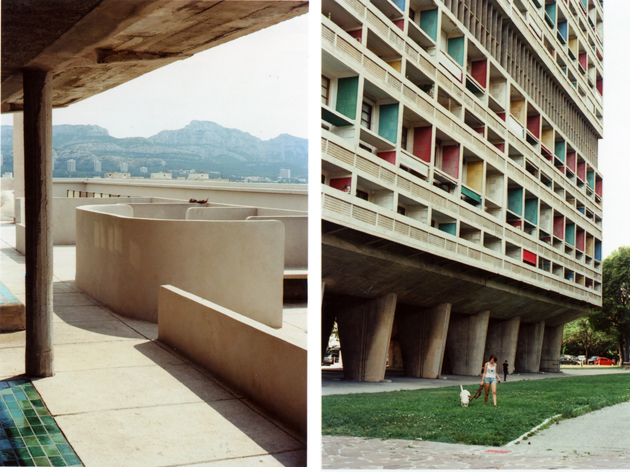
Four years ago, the French designer Ora-Ïto worked on the terrace of the Cité Radieuse in Marseille, the first Unité d’Habitation and one of the best examples of brutalist architecture, completed by Le Corbusier in 1952, with the aim of converting what was once a gymnasium into an art space. The roof of the giant ‘urban steamer’ was subjected to a lengthy restoration that brought it back to the original plan and converted into a contemporary art center of 600 m². A year after its opening, the project titled “Défini, Fini, Infini” by French artist Daniel Buren took over the open-air museum with seven works of monumental art, subverting the prospects through reflection and visual fractures generated by contrasting colors and mirroring surfaces. The French artist spent five months working on the project specifically for the space of Cité Radieuse, proposing an in situ work that plays with Le Corbusier’s architecture. Playing with a work of Le Corbusier was a big gamble, but it seems that Daniel Buren has succeeded.
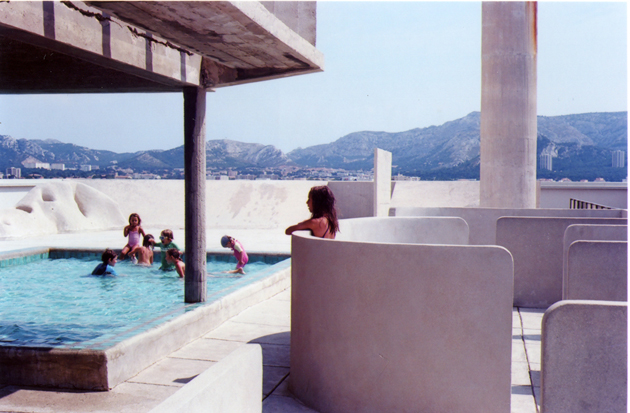
The intervention – with a strong aesthetic outcome – uses different sculptural blocks of pure, well defined color and angled mirrored panels that alternate along one edge of the roof, reflecting slices of heaven and beton brut. On the small outdoor theatre, on the long side wall and on the bottom of the vent stack, a combination of mirrors and color panels rebuild the space, deconstructing it ad infinitum, and defining a new vision of this iconic architecture of the Modern Movement. This game in space, the reflections of lights and parts of the landscape are building a contemporary unit, a graphic proposal where the body is the center of this three-dimensional game.
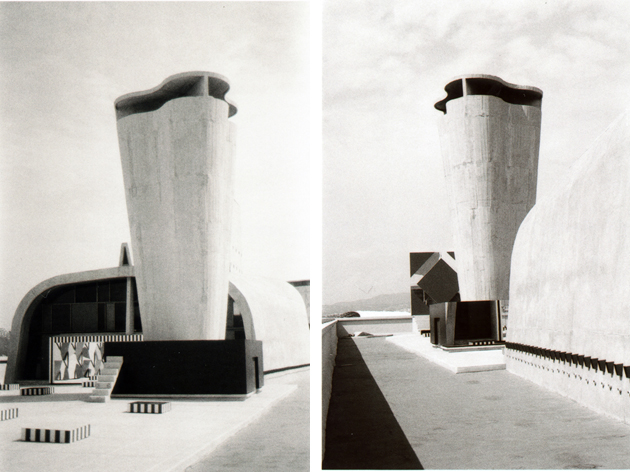
Works created by Daniel Buren are composed of mirrors and frames with bright colors on Dibond panels (aluminum composite panels). These extremely smooth surfaces also play with rough surfaces of the raw concrete or cement. The contrast is striking and spot-on, and this combination of different ‘skins’ invites the hand to caress both the work of Buren, as well as Le Corbusier’s rough concrete. Buren neglects the humors of painting in favor of the synthesis of perceptual phenomenon, by using visual tools that modulate space and guide the visitor beyond the limits of recognizable. The light, which reflects on the mirrors, acts as a third eye, allowing you to see what’s in front and behind, leading the viewer in a kaleidoscopic revelation of events. This can also be seen at night when the light passes through the large window, covered with translucent multicolor sheets, doubling the chromatic effects on the surfaces of the surrounding elements.
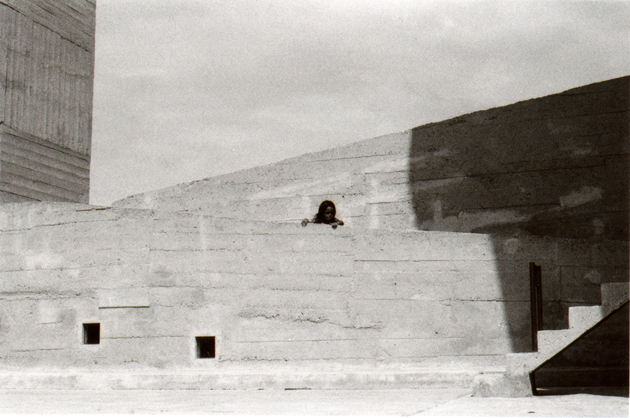
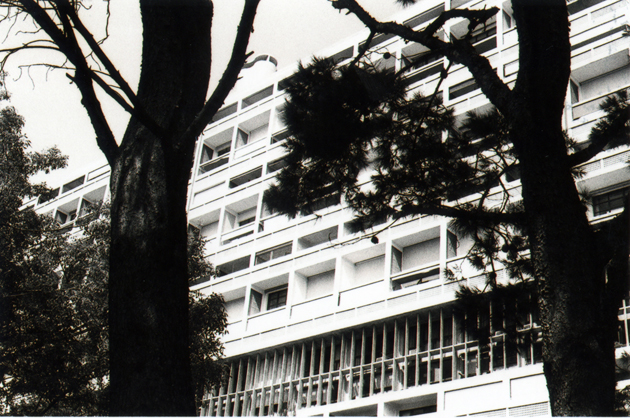
In the old gym, Buren plays with colors and mirrors: the floor is a carpet of mirrors, the interior facade becomes a window. The visitor feels like facing a television test pattern. At night, the play of light on the vent stack and the cuboid concrete of the kiosk lifts complement the work of Buren and give the whole terrace a truly dreamlike feeling. Daniel Buren therefore proposed the work with the idea of a real contemporary architectural project, a journey where landmarks in space are diverted to infinity, where the sheets of his works bring into contrast those of Le Corbusier’s and the landscape of Cité Radieuse’s rooftop ended in a new visual definition.
